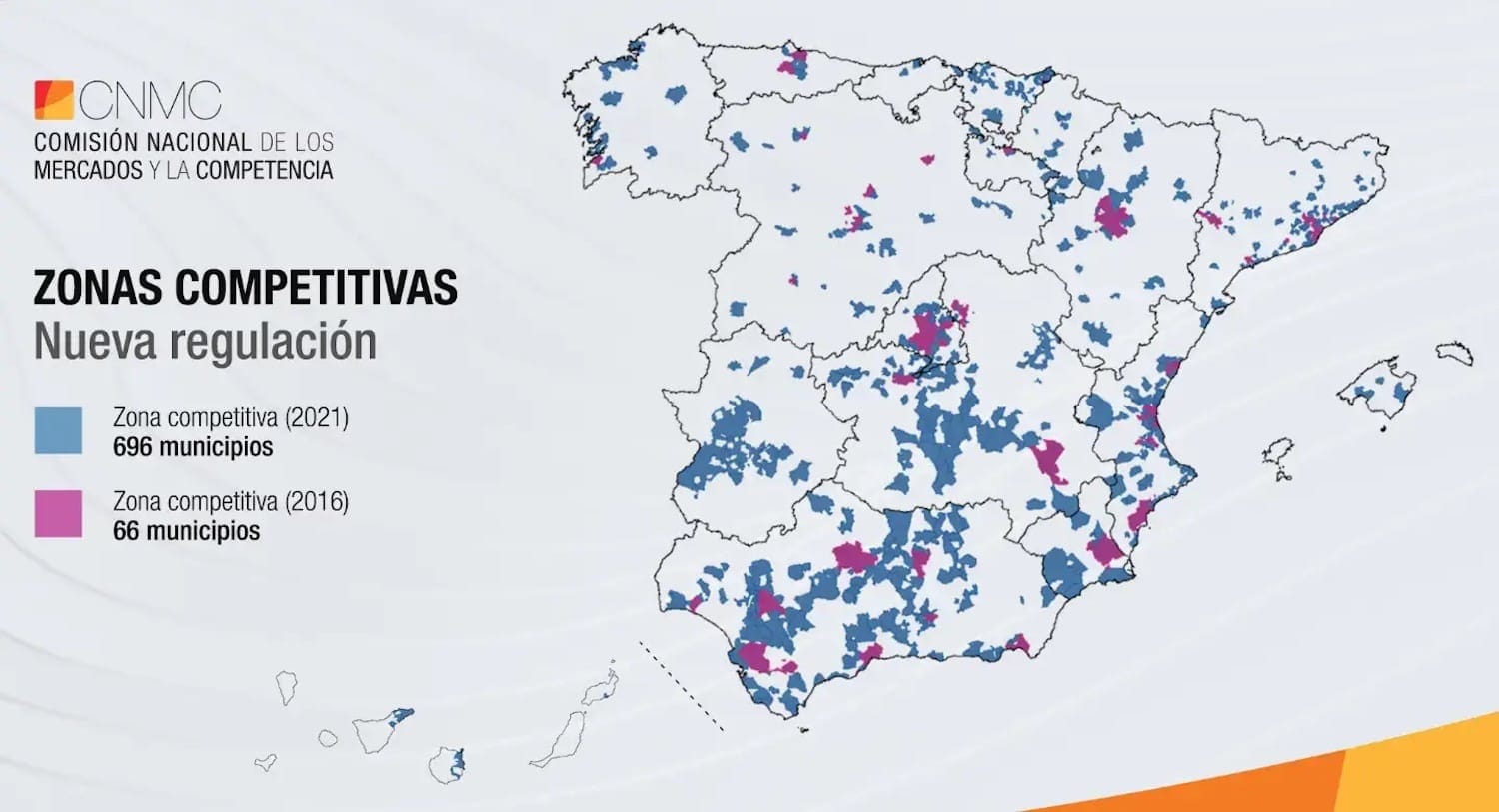The CNMC has confirmed that starting in 2025, Telefónica will no longer be required to share its NEBA fiber network under the current conditions, a change that redefines the telecommunications market in Spain. This end to regulation will allow Telefónica to operate its infrastructure without the constraints it has faced since the liberalization of the sector.
A New Competitive Landscape
The announcement comes at a time when Telefónica is no longer the operator with the most customers, following the merger of Orange and MásMóvil into MásOrange. This new dynamic has prompted the CNMC to relax rules that historically limited Telefónica as the former monopoly. The goal is to promote fairer competition in a market marked by the increasing popularity of low-cost offers.
Currently, the country is divided into two zones:
- Competitive Zone: Since 2016, Telefónica has been exempt from sharing its network in 696 municipalities, where competition among operators is sufficient.
- Non-Competitive Zone: In rural and less populated areas, the operator still has to provide regulated access to its infrastructure, leading to higher prices and fewer promotions for customers.
With this new decision, the CNMC believes that the market has matured thanks to alternative technologies such as 5G FWA and Starlink satellite services, reducing dependency on Telefónica’s networks.
Six-Month Deadline for Negotiation
After the official publication in the BOE, operators utilizing Telefónica’s network will have a six-month period to renegotiate their agreements. From then on, Telefónica will be free to set access conditions or decide how to exploit its network. This could consolidate private sharing agreements, already common with rivals like Vodafone, MásOrange, and Digi.
Additionally, Telefónica has made progress in creating fiber companies like BlueVía and in agreements with other firms, diversifying the use of its infrastructure and improving its profitability.
Impact on Consumers
This change will have direct effects on customers:
- In Competitive Zones: Greater competition and better offers are expected, with more attractive promotions.
- In Non-Competitive Zones: Consumers may face higher prices and fewer promotional options, although technologies like Starlink and 5G FWA promise viable alternatives.
Public Consultation Underway
The CNMC has opened a public consultation process to gather opinions from the sector before the final resolution. This consultation aims to balance the needs of operators and consumers, ensuring a fair transition to this new regulatory framework.
The End of a Regulatory Era
The elimination of NEBA regulation marks a milestone in Spanish telecommunications. Telefónica leaves behind decades of strict oversight to compete on equal terms, while the sector faces the challenge of maintaining a dynamic and accessible market for consumers, especially in rural areas. The key will be how companies adapt their strategies and the ability of new technologies to democratize access to quality services.
Source: Banda Ancha

